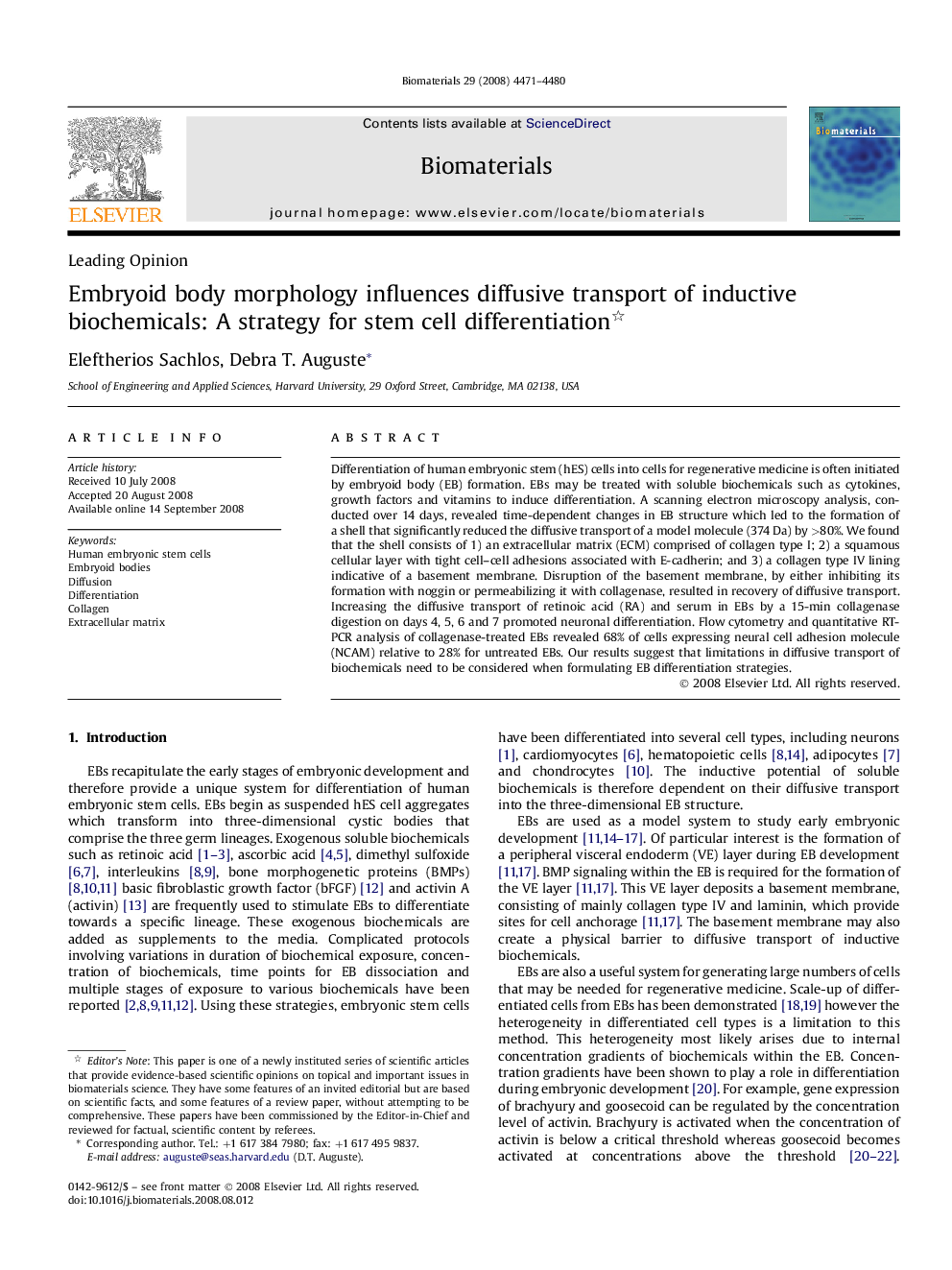| کد مقاله | کد نشریه | سال انتشار | مقاله انگلیسی | نسخه تمام متن |
|---|---|---|---|---|
| 9655 | 641 | 2008 | 10 صفحه PDF | دانلود رایگان |

Differentiation of human embryonic stem (hES) cells into cells for regenerative medicine is often initiated by embryoid body (EB) formation. EBs may be treated with soluble biochemicals such as cytokines, growth factors and vitamins to induce differentiation. A scanning electron microscopy analysis, conducted over 14 days, revealed time-dependent changes in EB structure which led to the formation of a shell that significantly reduced the diffusive transport of a model molecule (374 Da) by >80%. We found that the shell consists of 1) an extracellular matrix (ECM) comprised of collagen type I; 2) a squamous cellular layer with tight cell–cell adhesions associated with E-cadherin; and 3) a collagen type IV lining indicative of a basement membrane. Disruption of the basement membrane, by either inhibiting its formation with noggin or permeabilizing it with collagenase, resulted in recovery of diffusive transport. Increasing the diffusive transport of retinoic acid (RA) and serum in EBs by a 15-min collagenase digestion on days 4, 5, 6 and 7 promoted neuronal differentiation. Flow cytometry and quantitative RT-PCR analysis of collagenase-treated EBs revealed 68% of cells expressing neural cell adhesion molecule (NCAM) relative to 28% for untreated EBs. Our results suggest that limitations in diffusive transport of biochemicals need to be considered when formulating EB differentiation strategies.
Journal: Biomaterials - Volume 29, Issue 34, December 2008, Pages 4471–4480